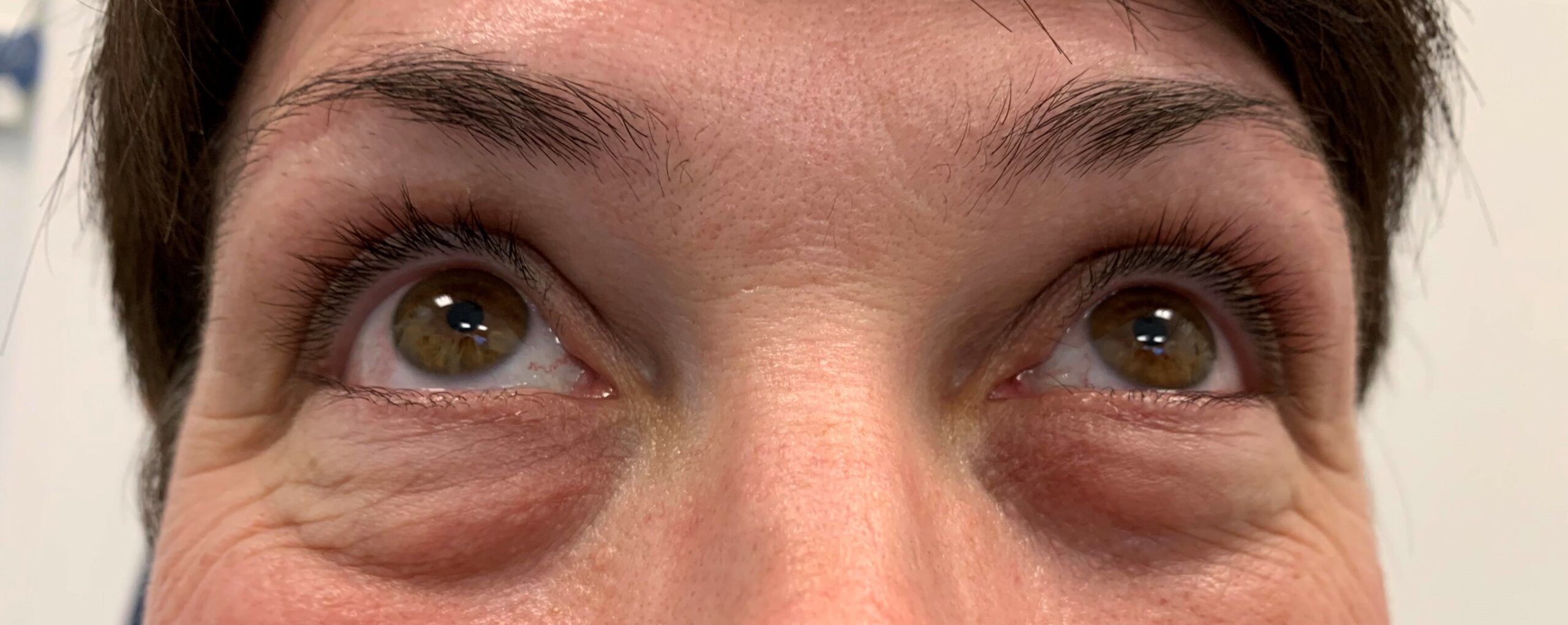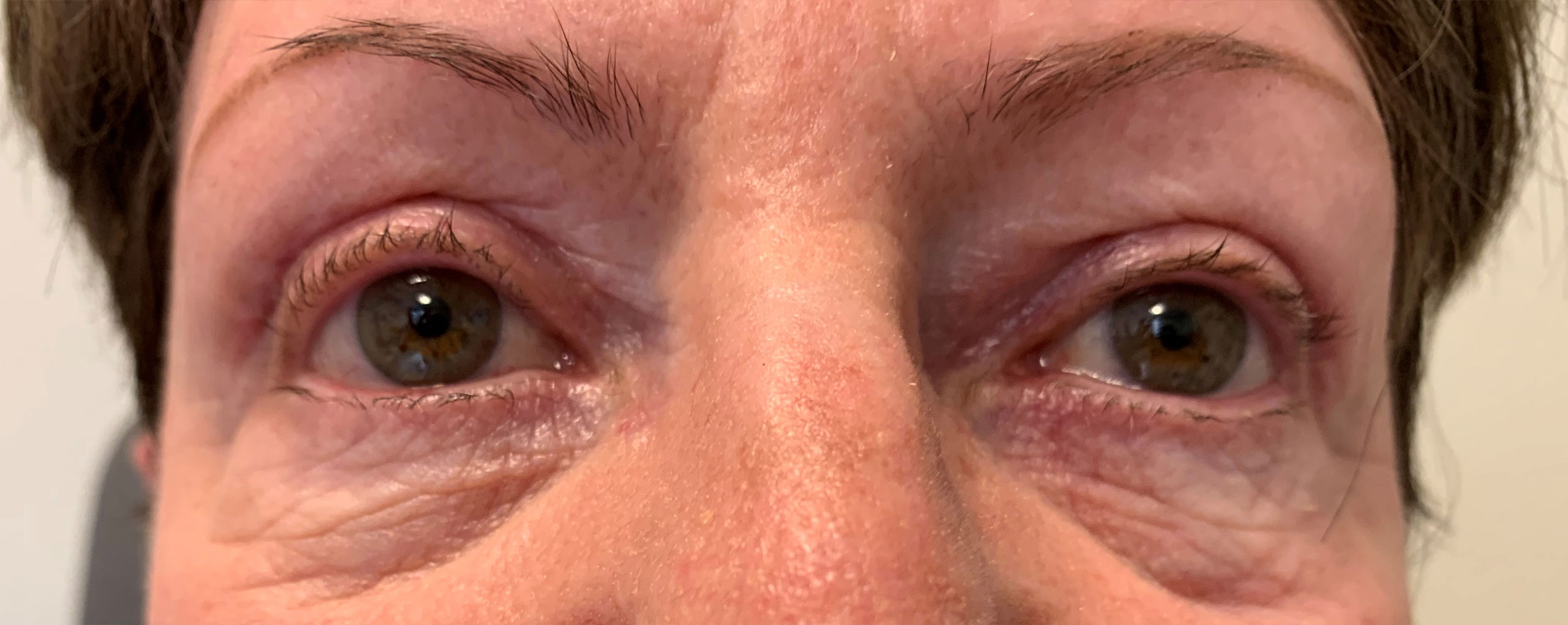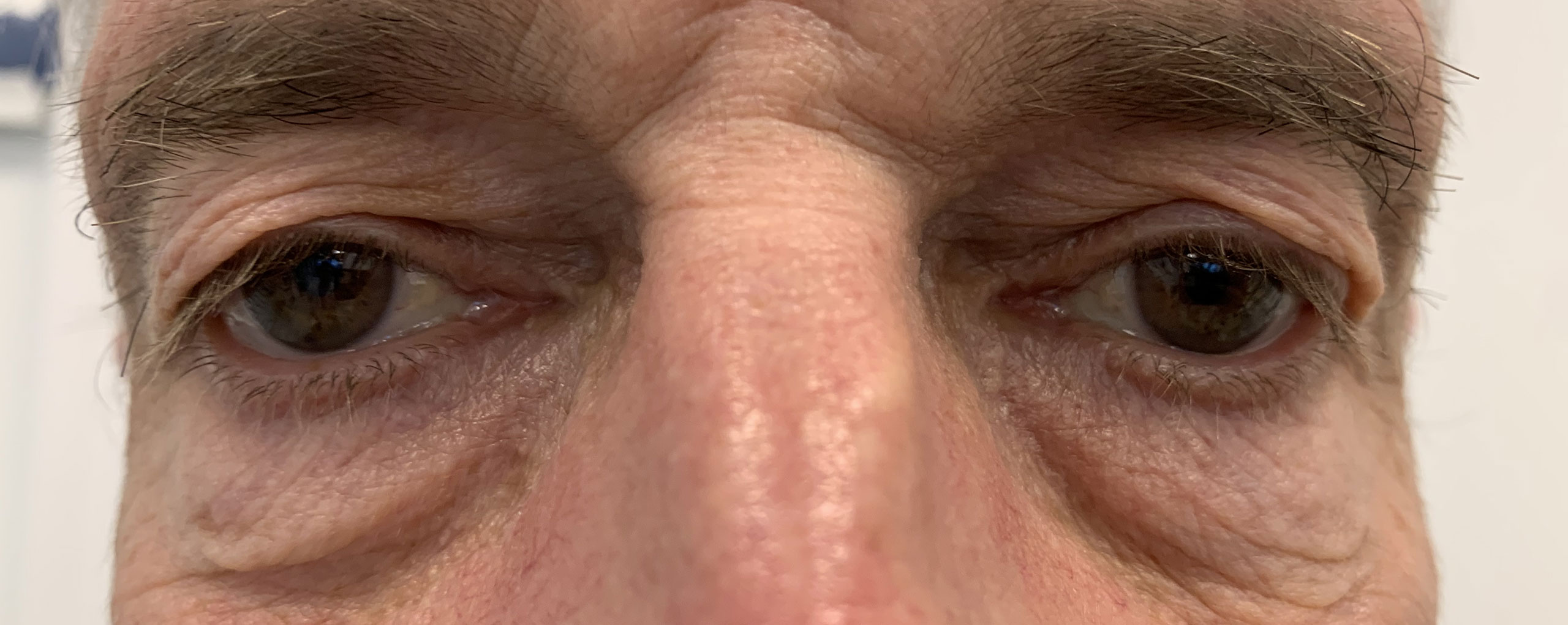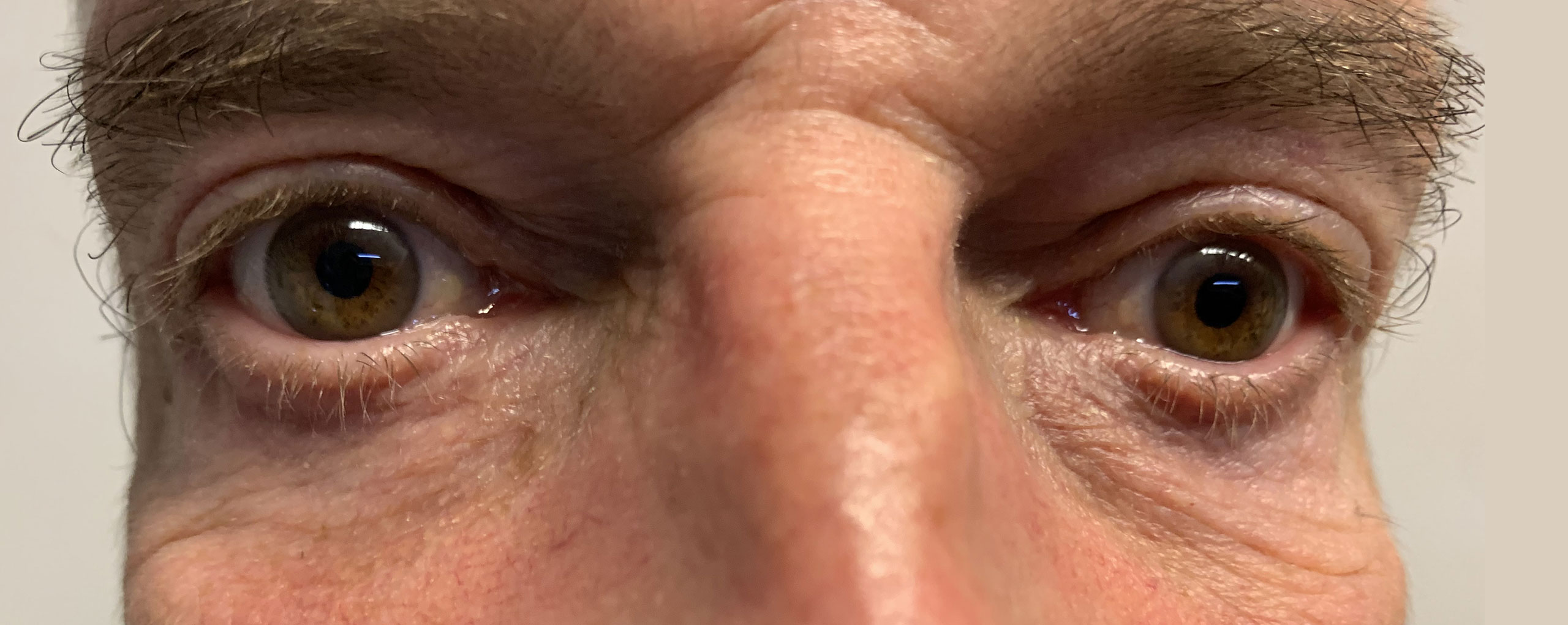Lower Blepharoplasty
Lower blepharoplasty is a cosmetic surgery procedure for the lower eyelids to treat dermatochalasis or excess skin on the lower eyelid. This sagging of the tissues can be either hereditary or a sign of aging.
It manifests itself in the lower eyelids by an excess of skin giving a wrinkled appearance with fine horizontal lines, most of the time associated with fatty hernias or “palpebral bags”. This is a cosmetic procedure, and therefore cannot be covered by health insurance.
Treatment: A complete ophthalmological examination is performed before the procedure.
Local anesthesia
In the lower eyelid, skin or skin-orbicular removal and cure of the palpebral pockets by resection of the excess fat protruding.
The incision is positioned 1 to 2 mm under the eyelashes in the lower eyelid and extends laterally into a wrinkle of the crow’s feet.
The sutures are made with very fine absorbable or non-absorbable sutures to be removed in consultation after about 5 days.
Hospitalization: This procedure is generally performed as an outpatient surgery, i.e. in day hospitalization. The anesthesia is usually local, possibly potentiated under anesthetic supervision.
Post-operative care: The immediate aftermath is generally simple, marked by a palpebral edema sometimes associated with a hematoma, with spontaneous resorption in about ten days.
The postoperative treatment includes the instillation of eye drops and the application of ointments on the scars, associated with the application of ice compresses in case of important oedema.
Visual disturbances are common in the first few days (tearing, dry eyes, accommodation problems), as well as difficulties in closing the eyelids, and a slight detachment of the outer corner of the eyelid from the eyeball.
Scars: Scars may remain visible for about two months (redness, indurations, small cysts…), and during this period, the patient should avoid exposure to the sun. Smoking can be the cause of poor scarring.
Results: The final results are judged at 6 months. Most of the time, they are satisfactory on the excess skin and fat, but there are limits. Despite a well-conducted operation, certain imperfections may persist (residual skin folds, small skin induration, slightly prominent and colored scars, etc.). Moreover, this surgery is not definitive, as the skin continues to change with age, and a new skin excess may be observed after about fifteen years.
Due to the nature of the procedure, an exact final result cannot be predicted, and no guarantee of a specific result can be given.
Early complications: Palpebral hematoma, always possible, exceptionally requires a surgical revision for evacuation.
Ectropion (or eversion of the eyelid), scleral show (or abnormally visible white of the eye), round eye, aponeurotic ptosis (drooping of the upper eyelid), and lagophthalmos (insufficiency of palpebral occlusion) may appear transiently.
Eyelid infection and diplopia (double vision) after lower eyelid surgery are rare. Finally, a decrease in vision or even blindness due to retinal vascular occlusion is exceptional. Surgical correction is usually not performed before 6 months following the first operation.
Source : SFO
Before/After
Before/After
CONTACT
You want to make an appointment? You can either call one of the 5 sites via the button below, or make an appointment directly online in the Contact section, or send me a message in the Contact section
The ophthalmology secretaries and Dr. Qin’s team are available to answer all your questions and requests for information in order to make the best choice. I will be pleased to welcome you at one of the 5 sites.





